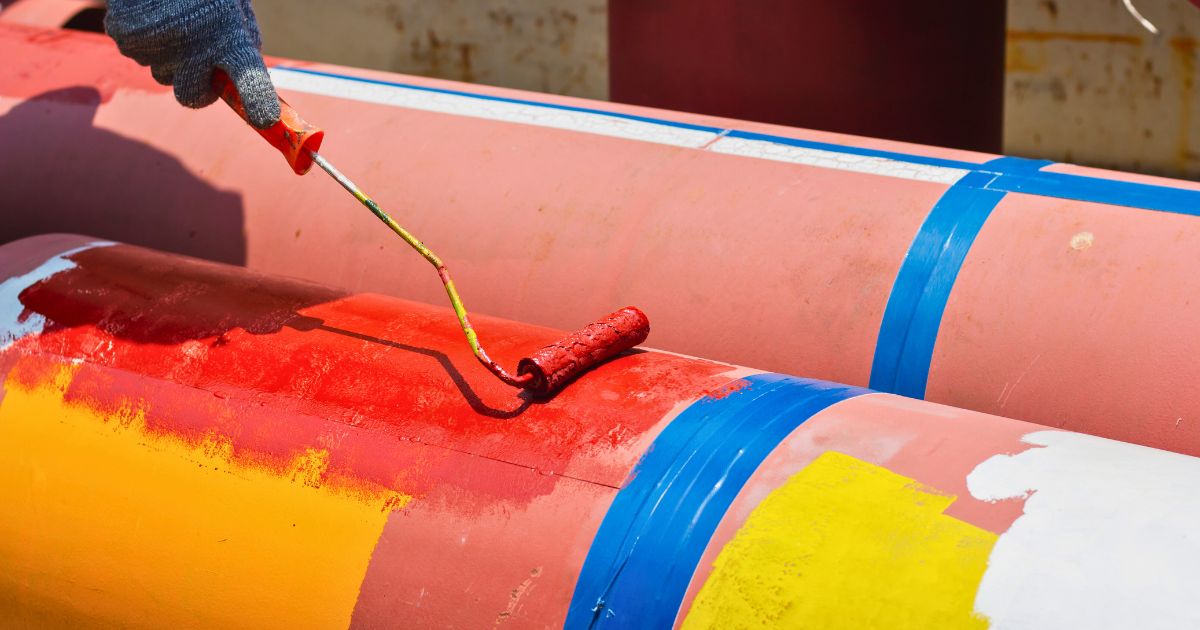
As a property owner or facility manager, you know the importance of protecting your assets with high-quality industrial coatings. The right paint or coating shields surfaces from corrosion, wear and tear, and the elements, while also providing an attractive, professional finish.
However, industrial painting is a complex process that requires specialized expertise, equipment, and techniques. Choosing the right industrial painting contractor is critical to achieving excellent results, avoiding costly mistakes, and ensuring your project is completed safely, on time, and within budget.
At All Source Building Services, we’ve been a trusted industrial painting contractor for over 15 years, partnering with clients across Metro Atlanta, GA on various projects and industries. We know what it takes to deliver exceptional quality and service.
In this guide, we’ll walk you through the 7 key steps to selecting the best industrial painting contractor for your unique needs. By following this process, you can feel confident in your choice and get the outstanding results your facility deserves.
Step 1: Define Your Project Scope
Before reaching out to contractors, clearly define the scope of your industrial painting project.
- What surfaces need to be painted (steel structures, tanks, equipment, pipelines, etc.)?
- Where is the project located (indoor, outdoor, confined spaces)?
- What are the site conditions and accessibility?
- Are there environmental or regulatory factors to consider?
- What is your target timeline for completion?
Having detailed answers to these questions will help you quickly narrow down to the painting contractors with the right capabilities and experience for your job. Don’t forget to loop in all key stakeholders, such as project managers, purchasing, EHS, and operations personnel who will be involved in planning and approvals.

Step 2: Set Your Budget
As with any major maintenance project, establishing your budget upfront is crucial. If you have past experience with similar painting jobs, you’ll likely have a baseline for the expected costs. If not, consult with your procurement team or industry contacts for guidance.
Keep in mind that industrial painting is highly labor-intensive, often requiring specialized access (scaffolding, lifts, etc.), surface preparation, and multi-coat protective systems. Experienced contractors can help refine your budget once you have estimates or bids based on the specific project requirements.
Budget for quality, not just the lowest price. Improper surface prep, sub-par materials, or shoddy application may save money initially but can lead to premature coating failure and much costlier rework down the road. Invest in a contractor who will do the job right the first time.
Step 3: Create a Project Timeline
Industrial painting projects require careful coordination and scheduling to minimize facility impacts and align with any shutdown or maintenance windows. Build out two timelines – one for the bid and contractor selection process, and one for the painting work itself.
On the selection front, allow sufficient time to:
- Prepare comprehensive bid documents
- Give contractors time for site visits and bid development
- Hold a pre-bid meeting to review the scope and answer questions
- Review and compare bids
- Award the contract
- Allow for contractor scheduling, color/coating submittals, and mobilization
On the painting project timeline, work back from your target completion date, considering:
- Compliance or regulatory deadlines
- Production/outage schedules
- Seasonality, weather conditions, and cure times
- Staging, containment, and cleanup
- Progress checkpoints and inspections
- Contingencies
The more detailed your project timeline, the better contractors can plan and bid the work accurately. During scheduling discussions, experienced painting contractors can often suggest sequencing and efficiency tips to streamline the process.

Step 4: Develop Bid Documents
Thorough, unambiguous bid documents are essential to receiving accurate, apples-to-apples bids from contractors. Your bid package should include:
- Detailed project scope
- Specifications for surface preparation (SSPC/NACE standards)
- Required coating systems (product/manufacturer, mil thickness, number of coats)
- Application methods
- Environmental, health and safety, and quality requirements
- Inspection and acceptance criteria
If you’re unsure about coating selection, consult with a NACE-certified coating professional, product rep, or painting contractor for recommendations based on the surface, service conditions, and desired life of the coating. They can help develop the optimal coating system and surface prep methods for your needs.
We highly recommend holding a pre-bid meeting and on site consulations so contractors can see the jobsite firsthand, take measurements, and ask clarifying questions about the scope and specs. This upfront communication helps ensure the bids you receive accurately reflect the project and avoids misunderstandings later.
Step 5: Prequalify Contractors
Industrial painting is a skill- and labor-intensive trade where the contractor’s expertise and workmanship are critical to the project’s success. Prequalify your bidders based on:
- Years in business and financial stability
- Proven experience with similar projects/industries
- SSPC QP certifications (QP1, QP2) for advanced facility/marine painting
- NACE inspector or PCS certifications
- Documented health and safety program with OSHA records and EMR rating
- Proper insurance coverage
- Access to skilled labor force and backup staffing
- Equipment and facilities
Check references, safety records, and look at examples of prior work to gauge the quality you can expect. Membership and involvement in industry organizations like SSPC and NACE are also good indicators that a contractor is committed to the highest standards and staying on top of current best practices.
Step 6: Evaluate Bids
Once you receive proposals, thoroughly review each contractor’s submittal for:
- Responsiveness to the bid requirements
- Scope of work and materials
- Proposed schedule
- Pricing, exclusions, and options
- Unique solutions or value-added suggestions
- Professionalism of the bid package itself
Be cautious of bids that come in significantly lower than others. The contractor may have missed part of the scope or may plan to cut corners. Similarly, a significantly higher price could signal some misunderstanding or specific jobsite challenges that contractor foresees. Follow up with bidders as needed to clarify any questions.

Step 7: Select Your Contractor
With the bids evaluated, you’re ready to select your industrial painting contractor and get your project moving. Consider not only price but also:
- Conformance with the bid spec
- Contractor’s reputation and references
- Ability to meet your schedule and requirements
- Overall ease of communication and professionalism during the bid process
A responsive, safety-minded contractor who demonstrates knowledge of your project and facility needs will likely be the best fit. Notify your chosen painter, request a contract, and hold a kickoff meeting to get all parties on the same page before work starts. Good communication throughout the project will help keep your painting job on track.
Wrapping Up
Investing the time upfront to prequalify and select the right industrial painting contractor for your project pays dividends in the long run. By following these 7 steps, you’ll find an experienced painting partner who will deliver the quality results and lasting protection your facility needs.
At All Source Building Services, we pride ourselves on being that trusted, knowledgeable painting resource for our clients. From initial budgeting and bid development through project completion, our team is here to guide you every step of the way.
Ready to discuss your next industrial painting project?
Tags:

Easy Guide to Transforming Your Workspace with Our Renovation Services
More
The Top 5 Benefits of Professional Air Duct Cleaning in Atlanta Offices
More
The Art of Professional Painting: How Professional Painters Elevate Your Business
More
Blast Away Confusion: Unraveling the Power of Abrasive Washing vs. Pressure Washing
More